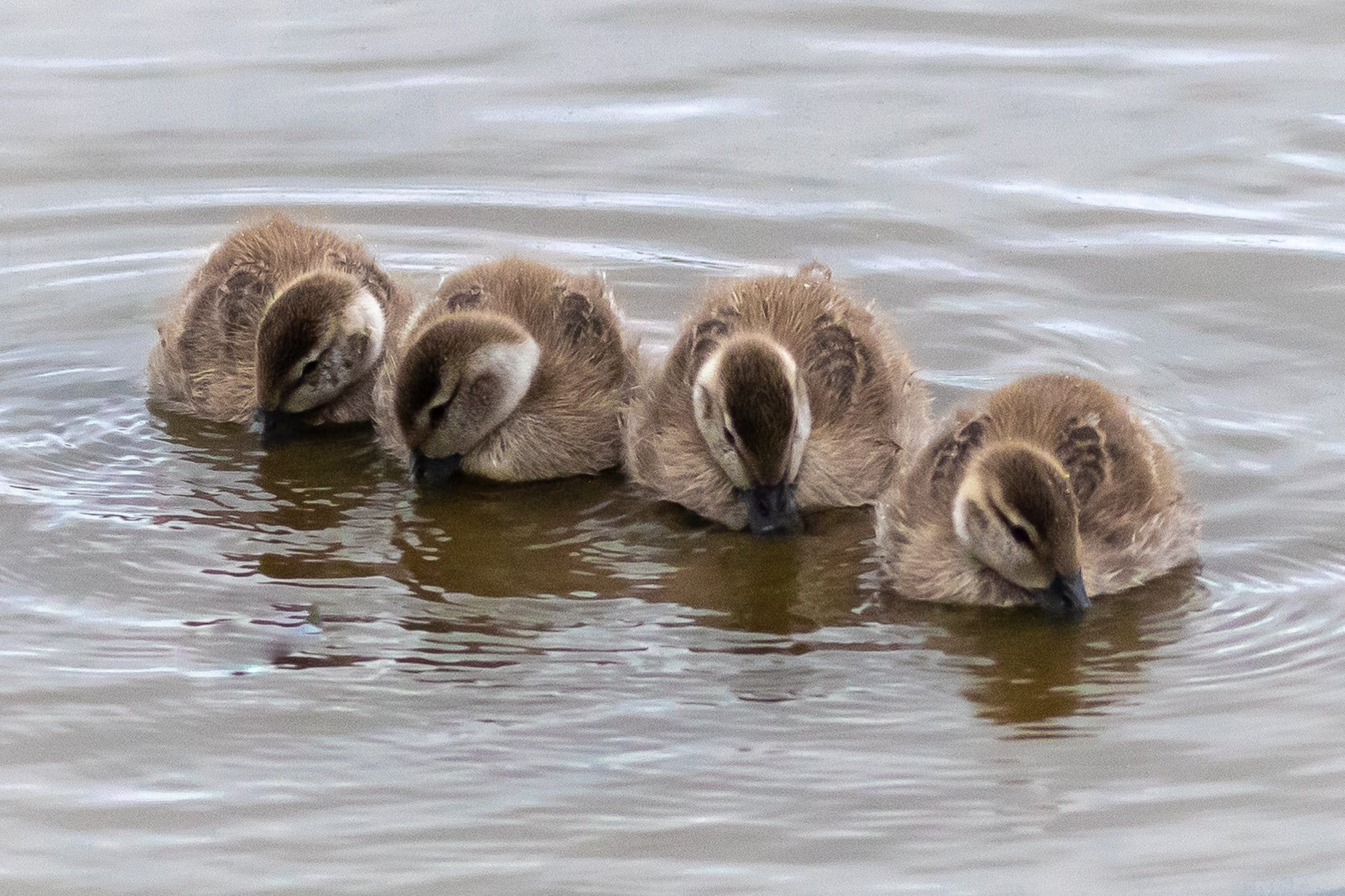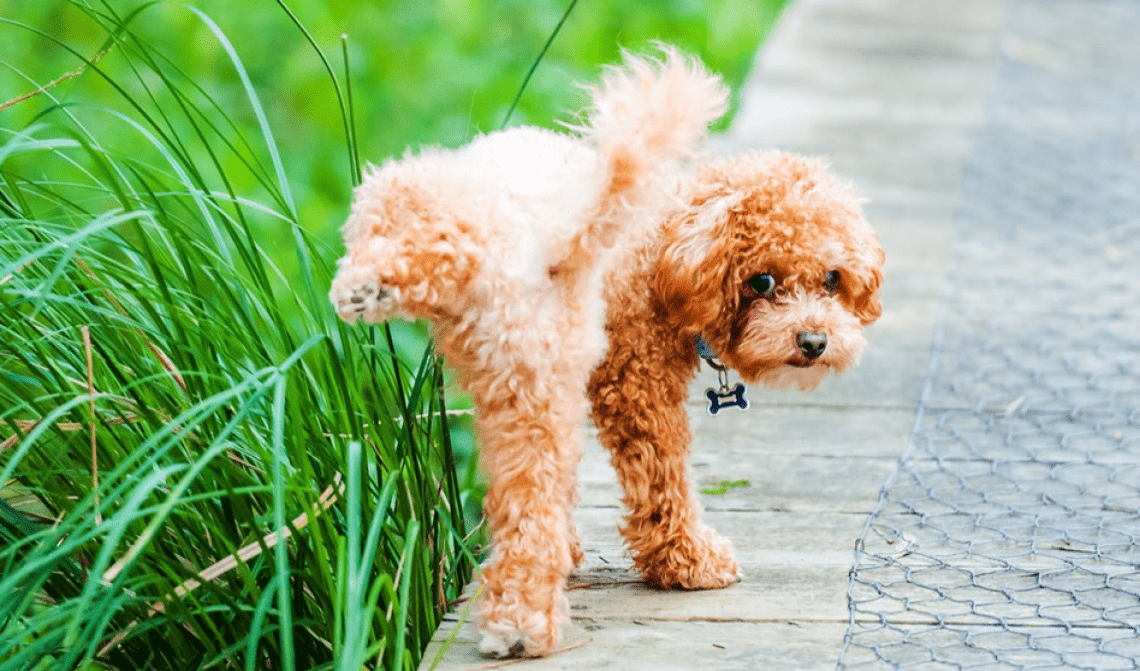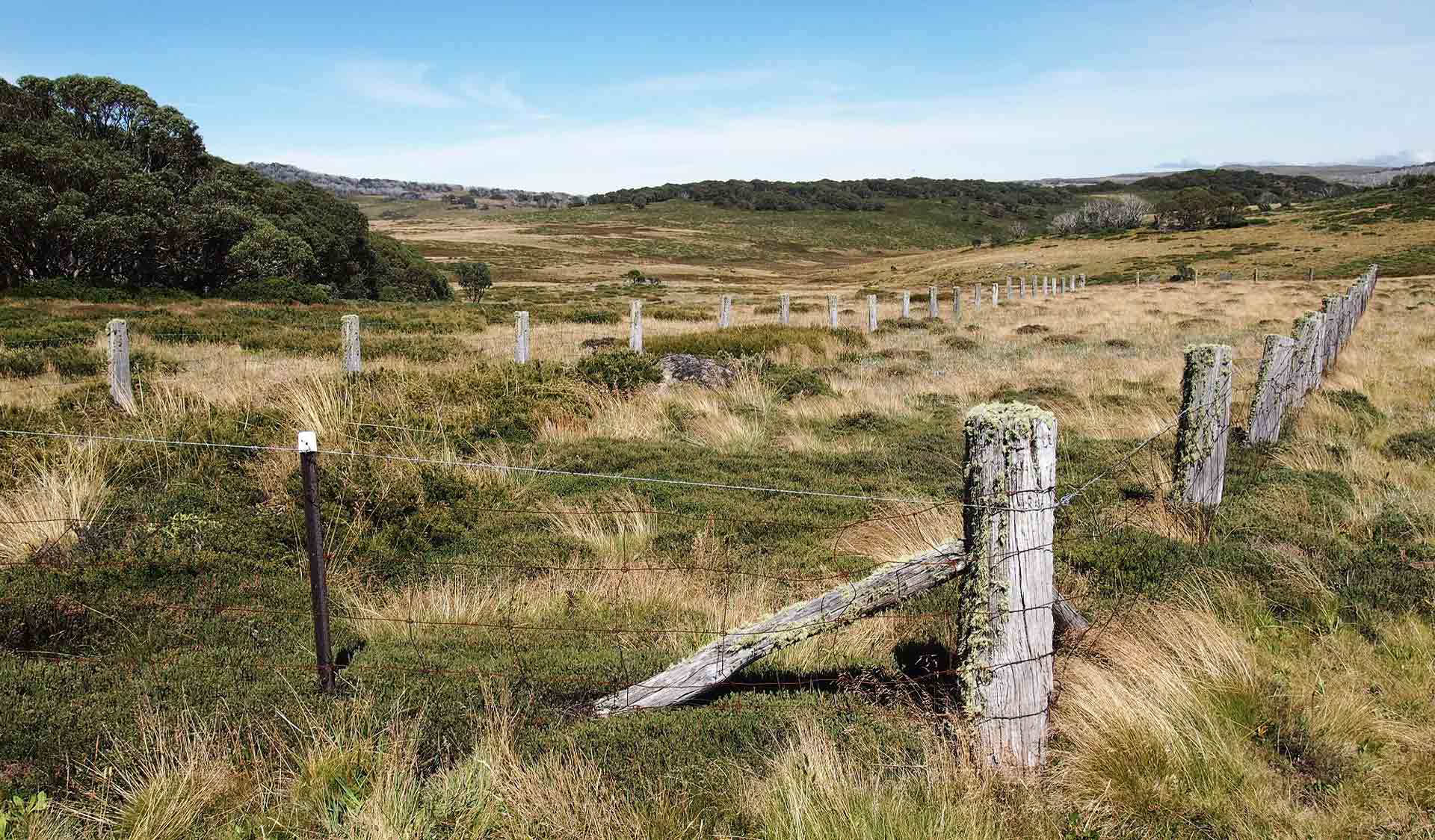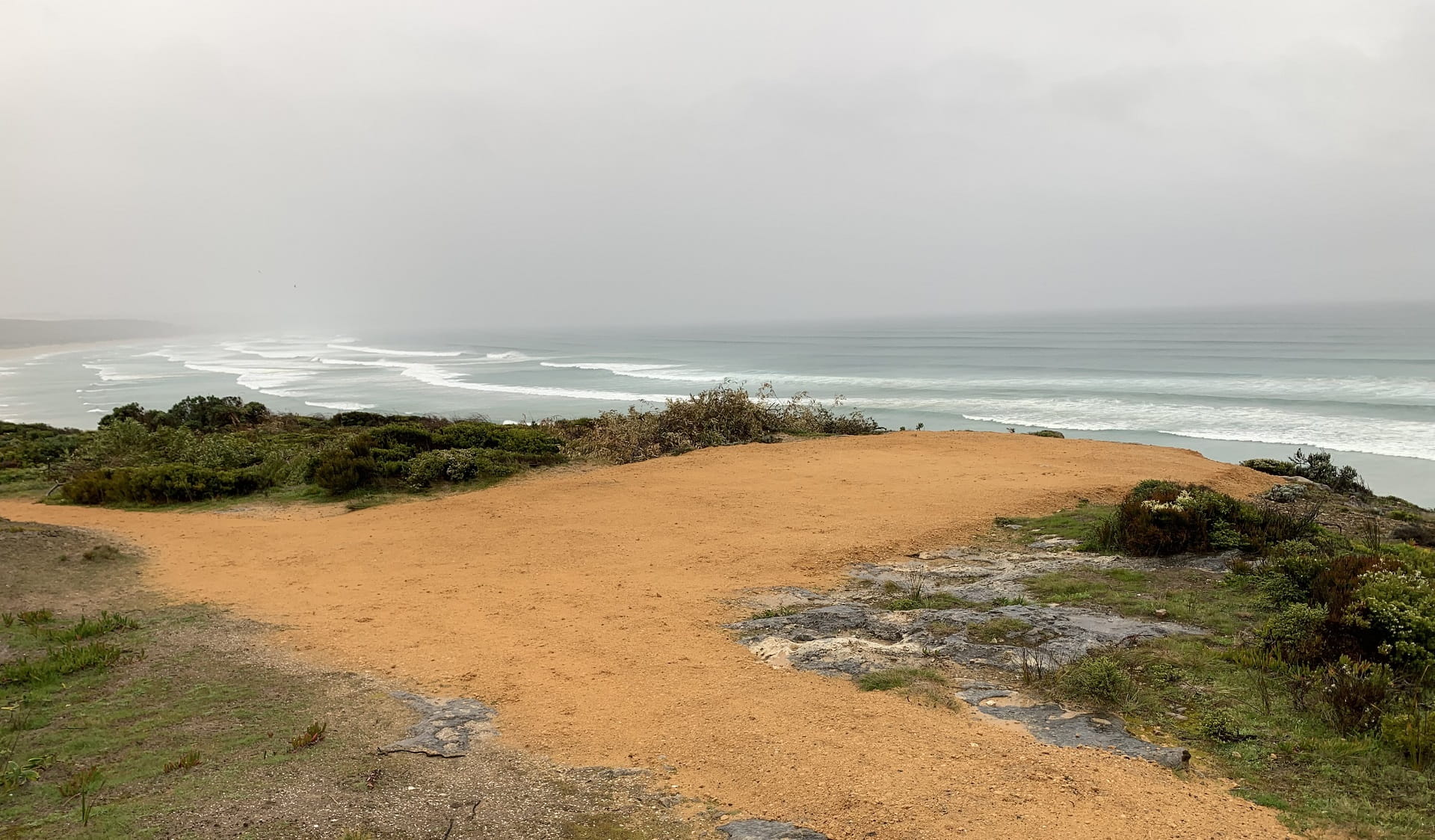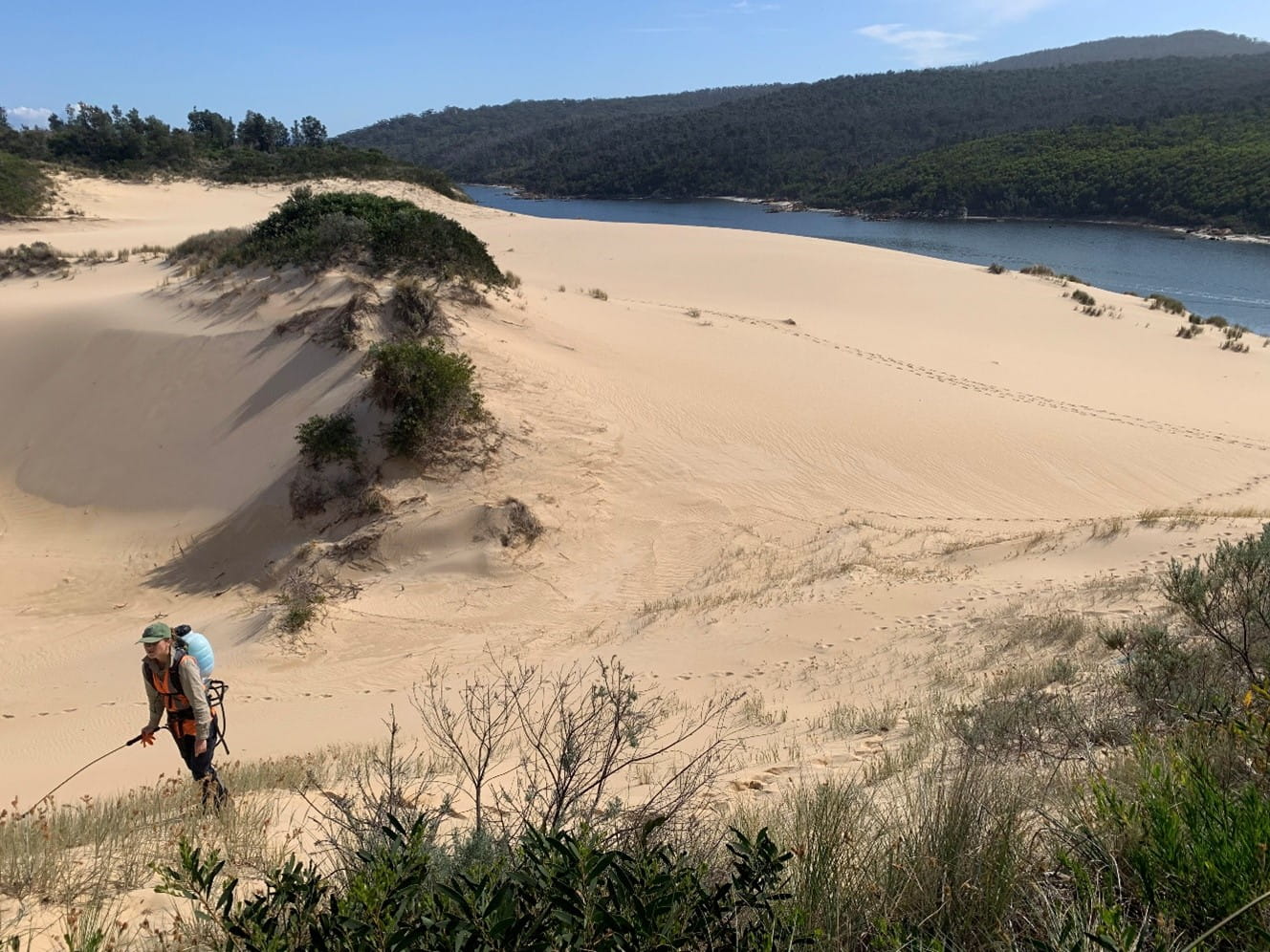Paws for concern: Dealing with doggy dilemmas
Monday 13 November, 2023
Eels, rats and birds of prey are also known to eat Grey Teal ducklings, despite their cute appearance. Image credit: Geoff Ball
Spring has finally arrived in Victoria. Many cute and fluffy animal babies are hatching out of their eggs or emerging from their mothers’ pouches for the very first time, waddling behind their overprotective parents.
The newborn babies must navigate an increasingly complicated environment, usually buffered by a busy urban area. For ducklings, most will not survive. One study found that 68 per cent of Grey Teal ducklings (Anas gracilis) won’t make it past a year of life, succumbing to foxes and cats, other predatory waterbirds, and even larger fish gobbling them up from under the water’s surface. Almost everything will try to eat a duckling, but in many areas, there is genuine concern that “man’s best friend” is potentially upsetting the balance.
The purpose of national and state parks is to provide a much-needed refuge for native plants and animals. Minor actions from dogs, such as leaving their scent on a tree, can repel wildlife and induce stress, especially to smaller sized mammals, reptiles, and birds. Of the species mentioned in this article below, each have one thing in common (other than being native to Australia); they were recently victims of off-lead pet dogs.
Before we identify and catalogue the issues little “Bluey”, and “Bingo” may have on wildlife, let’s look at some of these adorable and fluffy newborns in Victoria and the strategies they employ to survive in the wild.
Black Swans (Cygnus atratus)
Found throughout Australia, the Black swan pairs for life, but this does not guarantee that the male is the sole father of a cygnet (baby) brood. This "promiscuous" behaviour is relatively common in many bird species, and one recent study from the University of Melbourne found that up to 15 per cent of cygnets did not belong to the father.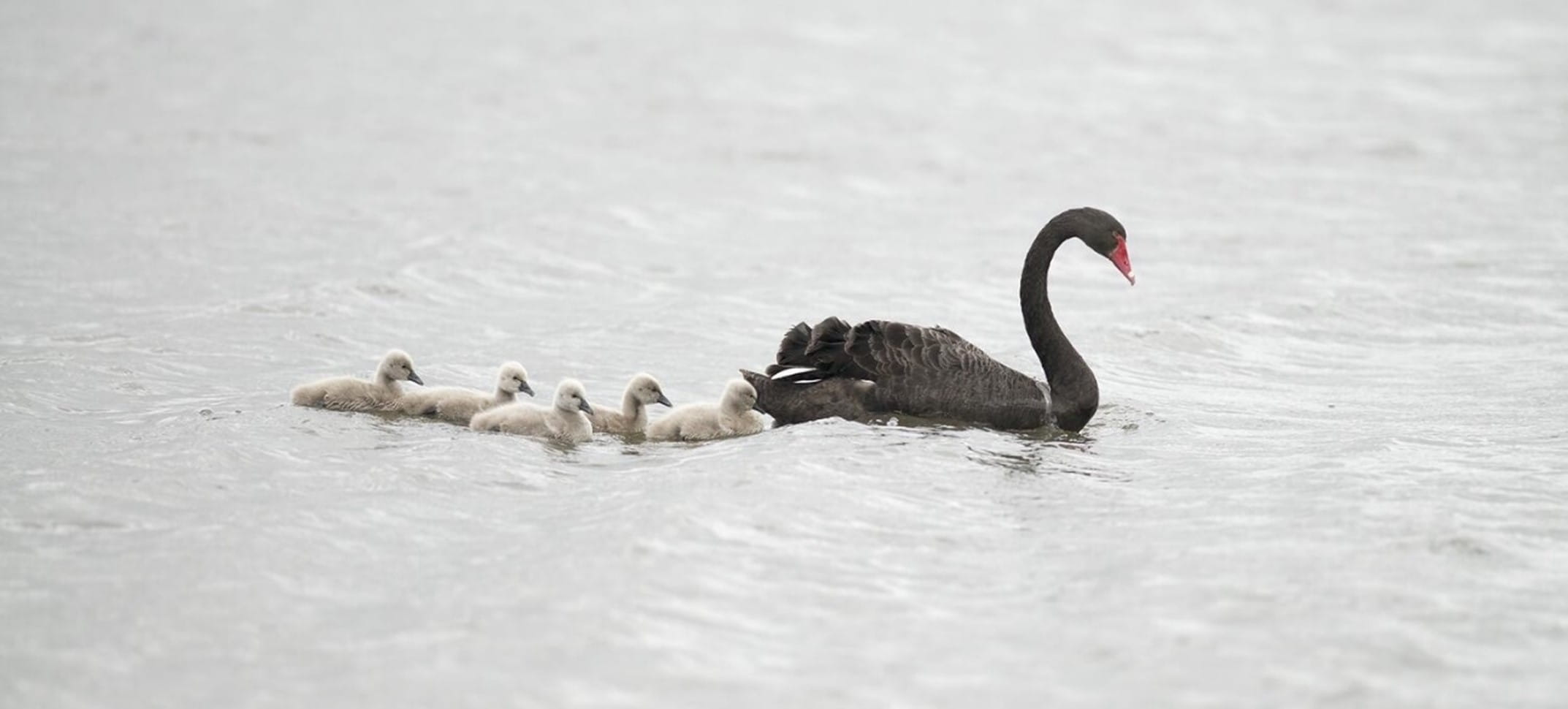
Black Swans create a large nest of floating vegetation which can be up to 1.5 meters in diameter. The cygnets have a dull grey plumage which aids in camouflage; on the water, such coloured plumage can be hard to differentiate. Image credit: Museums Victoria.
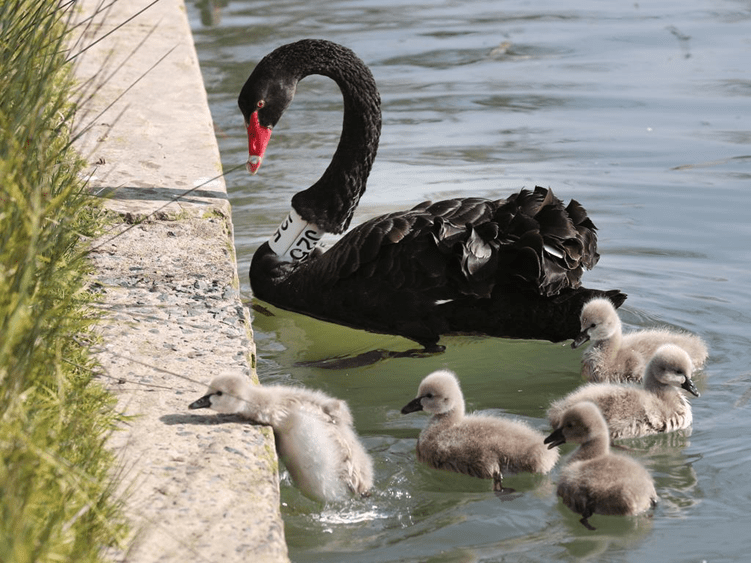
They are fantastic parents (by bird standards), rearing their young until they are fully fledged at nine months at age. They will often *HONK* or even *whistle* at you if you threaten their young or come too close to the nest. Image credit: David Crosling.
Little penguins (Eudyptula minor)
The smallest penguin in the world inhabits many coastlines around Victoria and usually live in makeshift burrows in sandy dune areas. On the St Kilda Pier and Breakwater located in the traditional Sea Country of the Bunurong People, a small colony of Little penguins established themselves throughout the 1970s and it is now currently home to more than a thousand individuals. They live within the nooks and crannies of the large rocks that make up the breakwater.
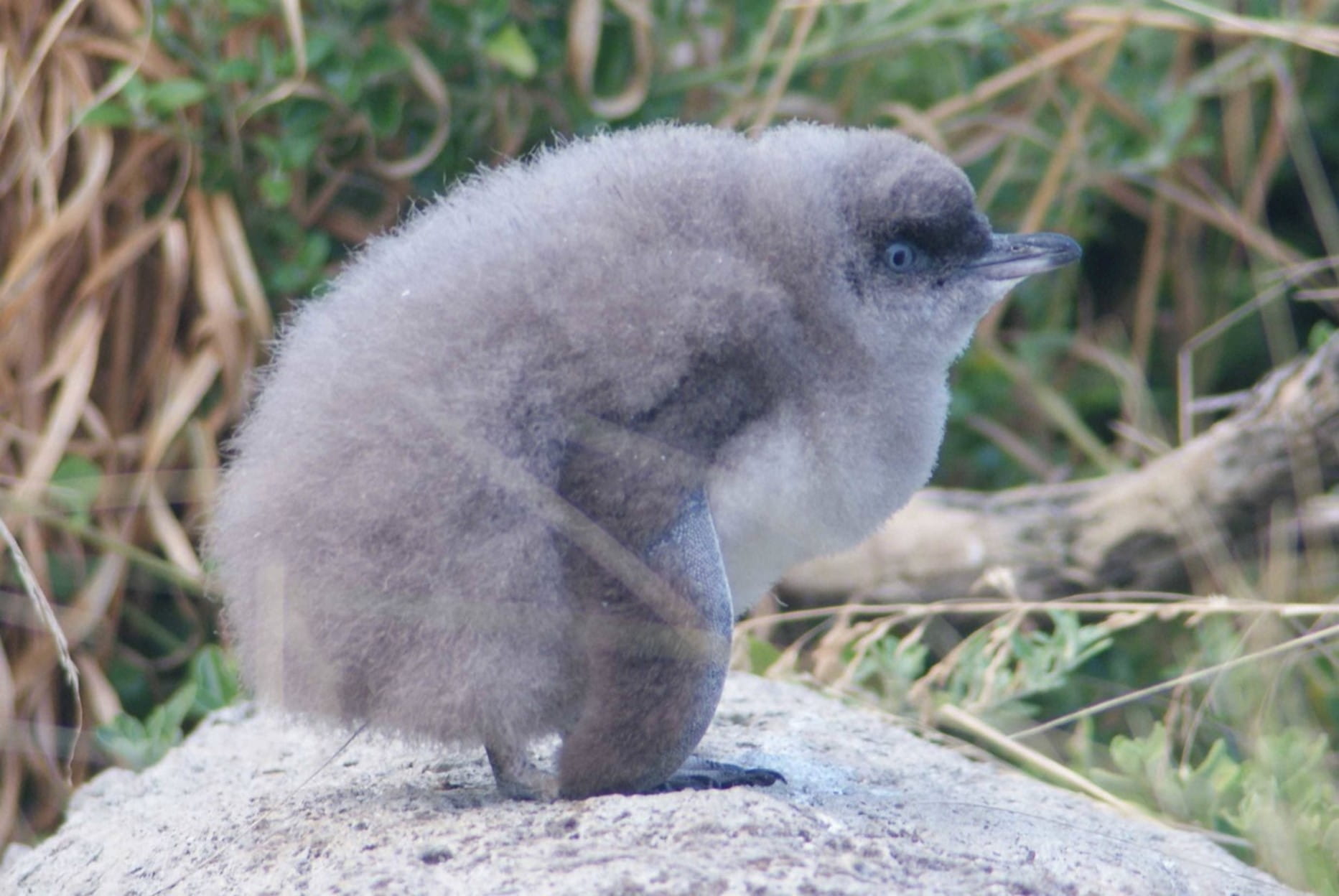
The ridiculous looking chicks (that have feathers that look like dense, fluffy fur) are incapable of feeding themselves until they develop their waterproof plumage, which usually grows in at around 2 months of age. They are wholly reliant on their parents, that regurgitate fish and squid into their mouths for sustenance. Image credit: John Tongue
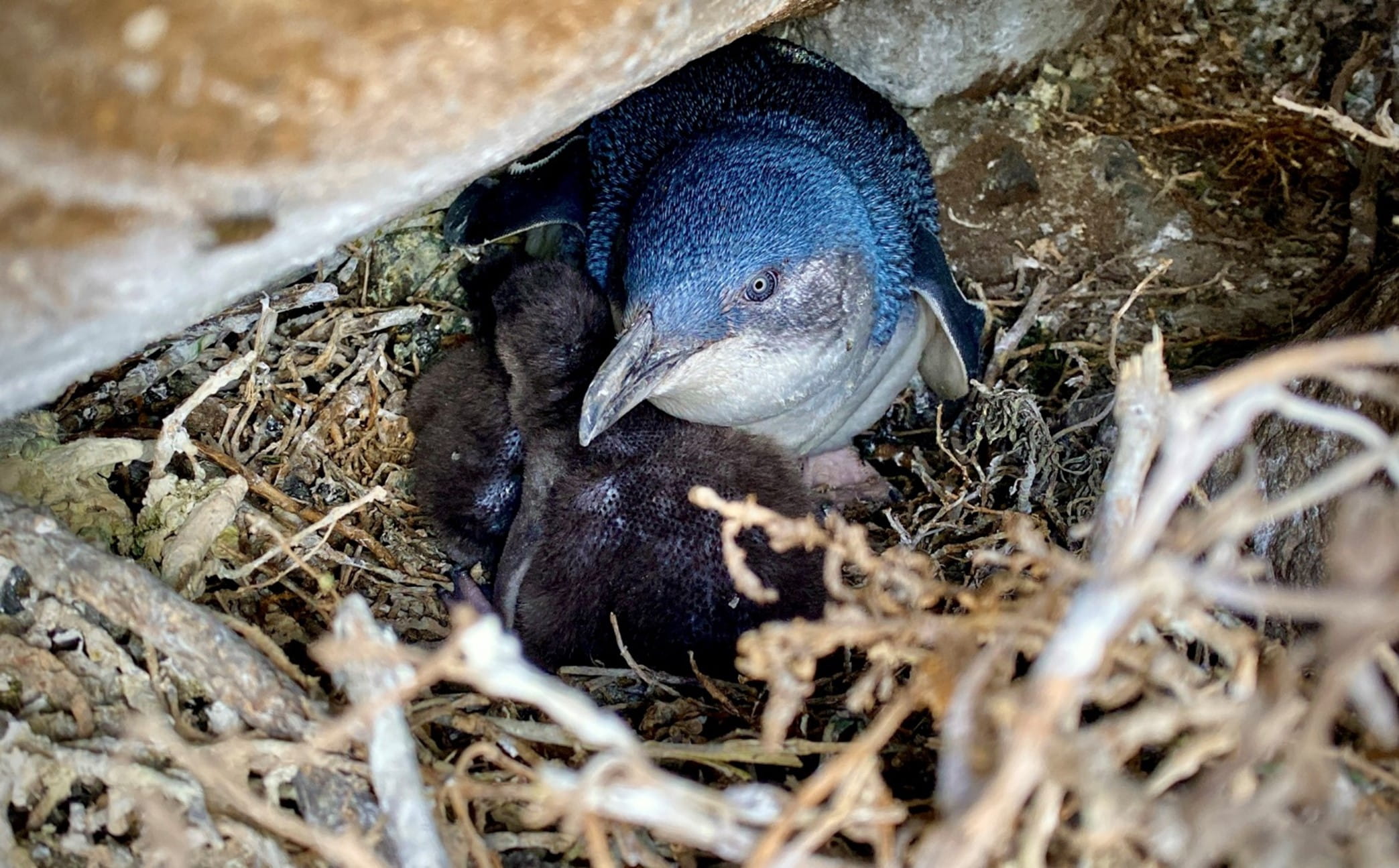
Nests on the St Kilda Breakwater can be obvious to spot at St Kilda, due to the white excrement that is pockmarked across many of the larger rocks. St Kilda Pier and Breakwater is currently undergoing a renovation, and this colony is not accessible for public viewing in 2023. Image credit: Earthcare St Kilda
Koala (Phascolarctos cinereus)
Koalas found in Victoria are often "THICCC-er" than their counterparts in northern New South Wales and Queensland. Their dense coat is often fluffier and darker, and the bucks (males) can weigh up to 14 kilograms in Victoria, compared to the bucks in Queensland that weigh up to 9 kilograms. The joeys of the koala start out in life totally hairless, blind and with no ears. They weigh the same as a jellybean, as they slowly crawl from the birthing canal to the backwards facing pouch and latch onto one of two teats.
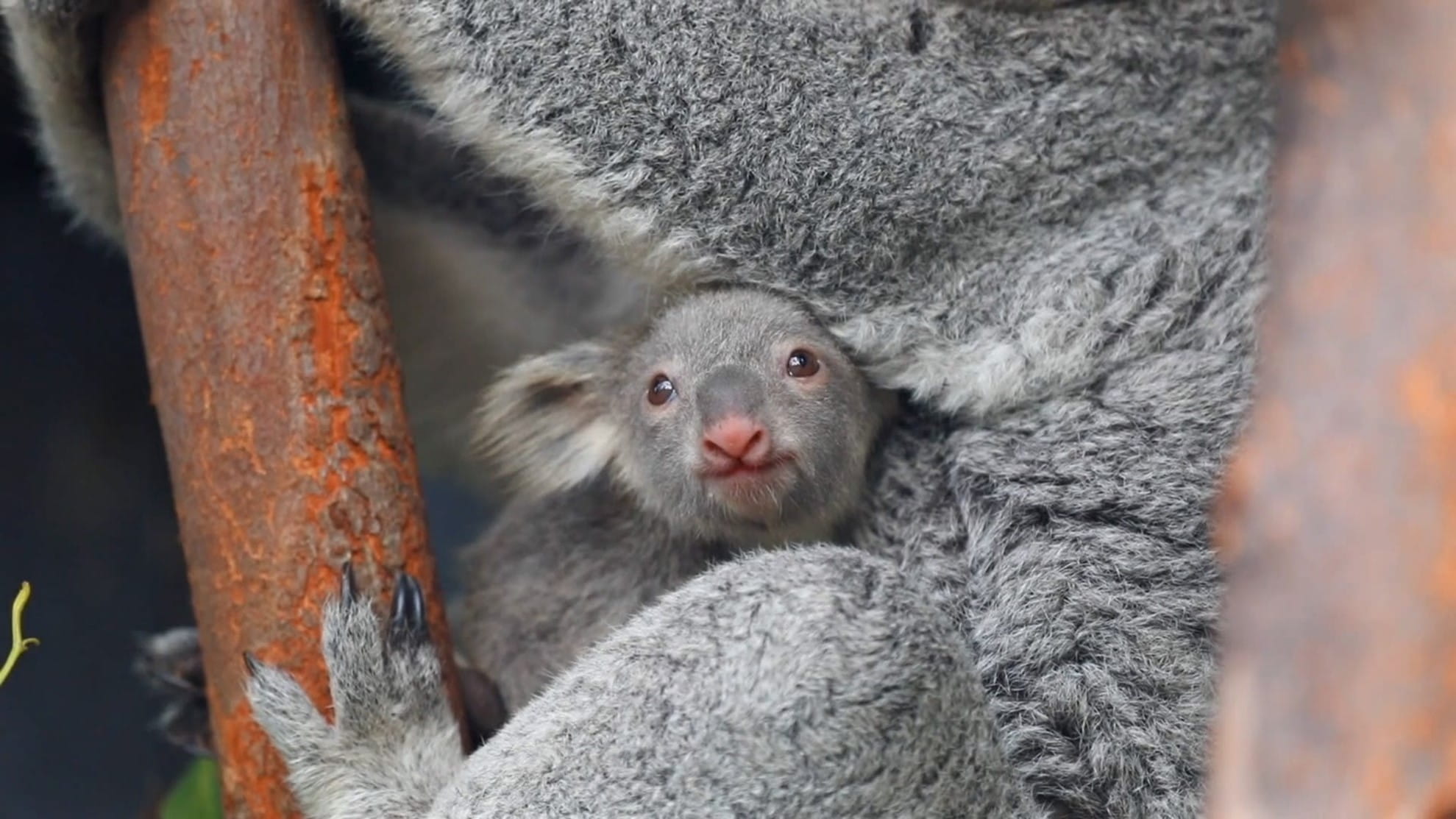
The joeys of a koala may be incredibly cute, but the mating dance that finishes with the joey in the mother’s pouch all starts with the male and his “blood curdling” call. While searching for a prospective partner, the “buck” has what can only be described, as one of the most terrifying noises any camper could possibly hear in the middle of the night. This long and protracted “belch” is the first stage of enticing a female. The females may be judging this male from his “belch”, and it’s entirely possible that the deeper his pitch, the larger he is. Image credit: Australian Reptile Park.
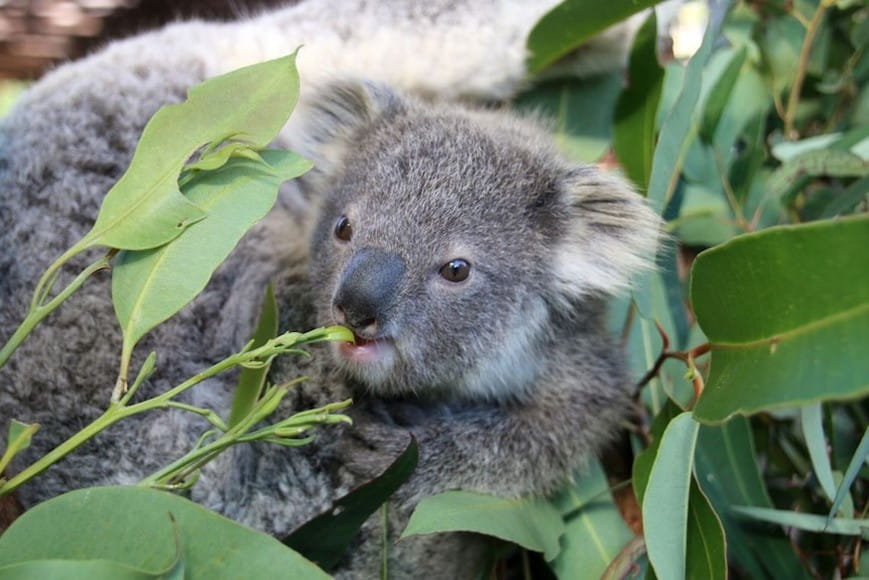
After 22 weeks in the pouch, the joey will begin to open its eyes and peek out of the pouch. It’s at this stage that the mother creates a unique concoction for the joey, a faecal probiotic. Normally koala poo is firm, but at this stage of the joey’s life the mother creates a puree of just the right consistency for the newborn. The probiotic provides the microbes that allow the joey to digest eucalyptus leaves, an ability it is not born with. Image credit: Taronga Zoo
Swamp Wallaby (Wallabia bicolor)
This wallaby is found throughout the eastern states of mainland Australia and are quite "THICC" by wallaby standards, with males weighing up to 17 kilograms in weight. They are able to chew on a number of plants that would be toxic to other creatures (such as the coarse and widely distributed fern Bracken) and prefers to live in thick forest undergrowth.
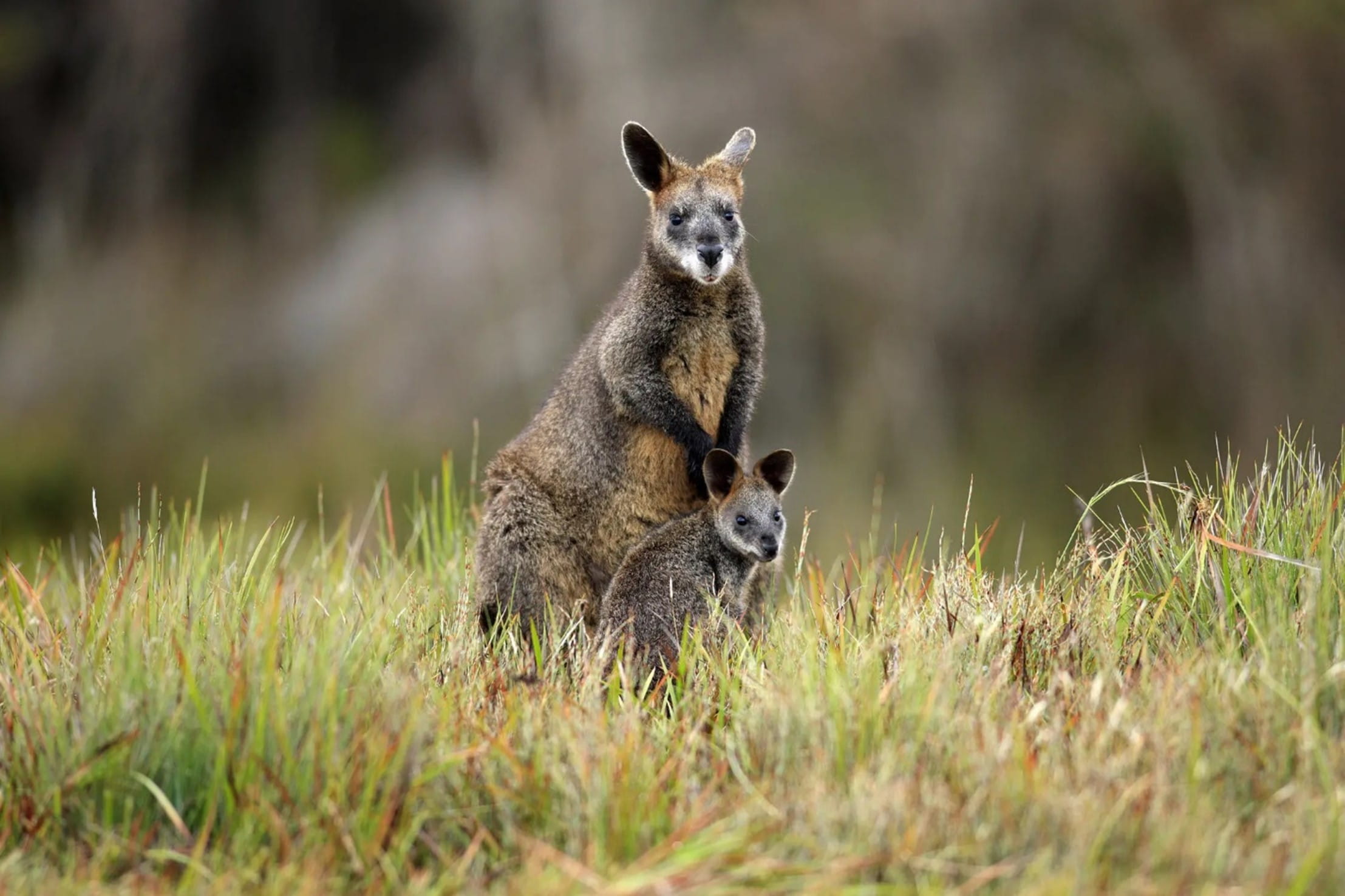
The female Swamp Wallaby is permanently pregnant. Thankfully for these marsupials, they’re not pushing out a fully formed baby (like Blue whales, which give birth to an infant the size of a small elephant). Image credit: Jurgen and Christine Sohns.
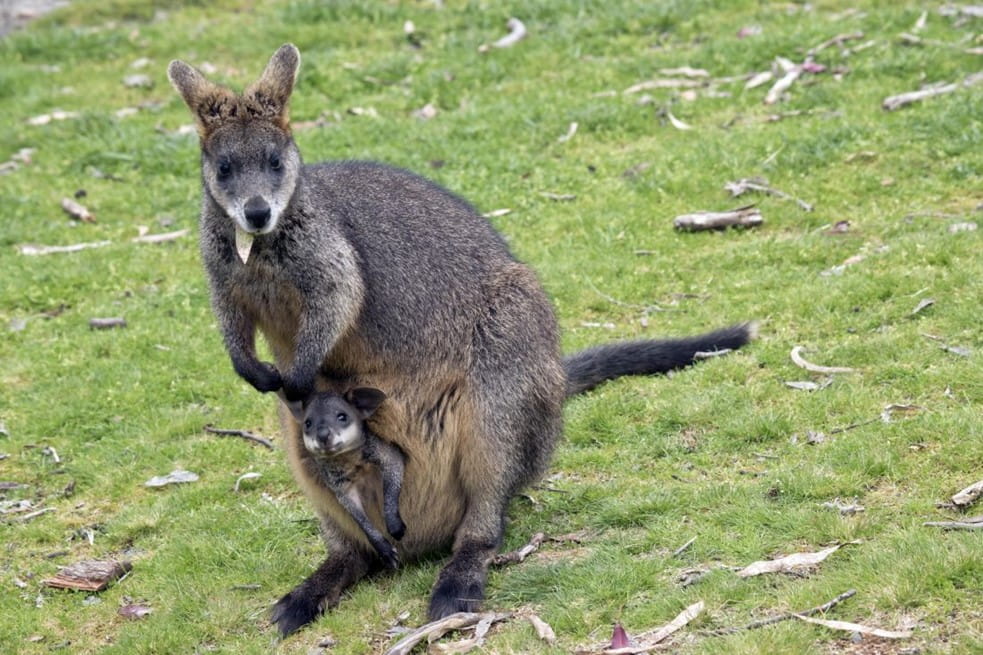
As with koalas, the baby is tiny, underdeveloped and no bigger than your thumb nail. The joey crawls its way through to the females pouch and latches onto a teat. Unlike humans, kangaroos and wallabies have two uteri. As the embryo in the second uterus starts to form, the primary joey in the pouch will start to suckle milk. The embryo then undergoes a type of dormancy that can last up to 11 months. When the joey in the pouch finally leaves its mother and stops suckling, the embryo continues developing, and thus the cycle of being constantly pregnant, continues. Image credit: Shutterstock.
Dusky moorhen (Gallinula tenebrosa)
Occuring throughout Australia and even areas as far north as Borneo, the Dusky moorhen is found in wetland habitats. Dusky moorhens may hold the accolade for the ugliest babies in Spring. Their “friar tuck” appearance and weird shabby plumage doesn’t ellicit the “Aww, arent they cute” response from most people.
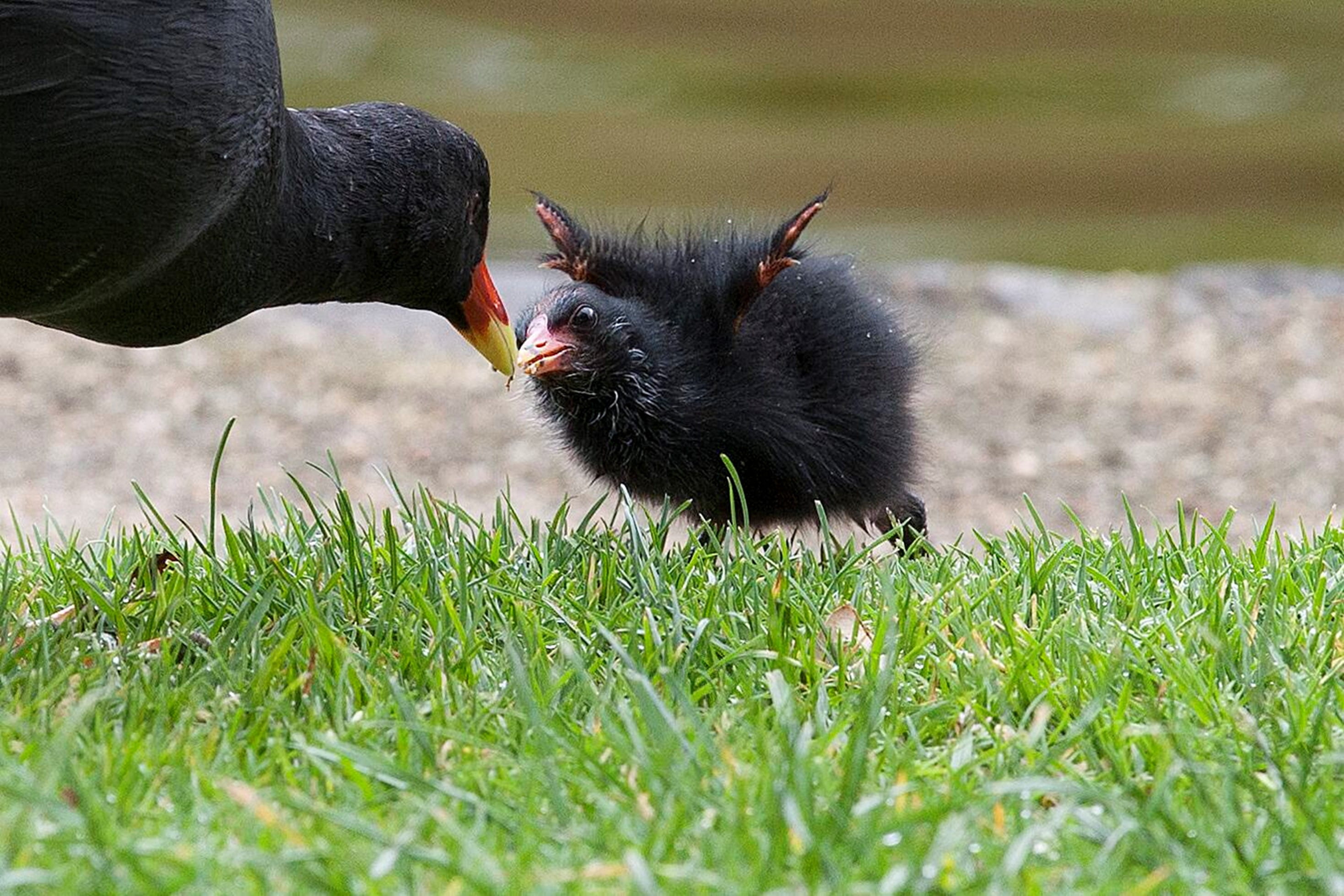
A vestige of their “dinosaurian” past is evident in the image above; the chicks hatch out with well-developed claws on their wings, which may aid in preening themselves or even grappling vegetation. All modern birds diverged from theropodal (meat eating) dinosaur ancestors over a hundred and sixty million years ago #birdsaredinosaurs ... Image credit: Museums Victoria.
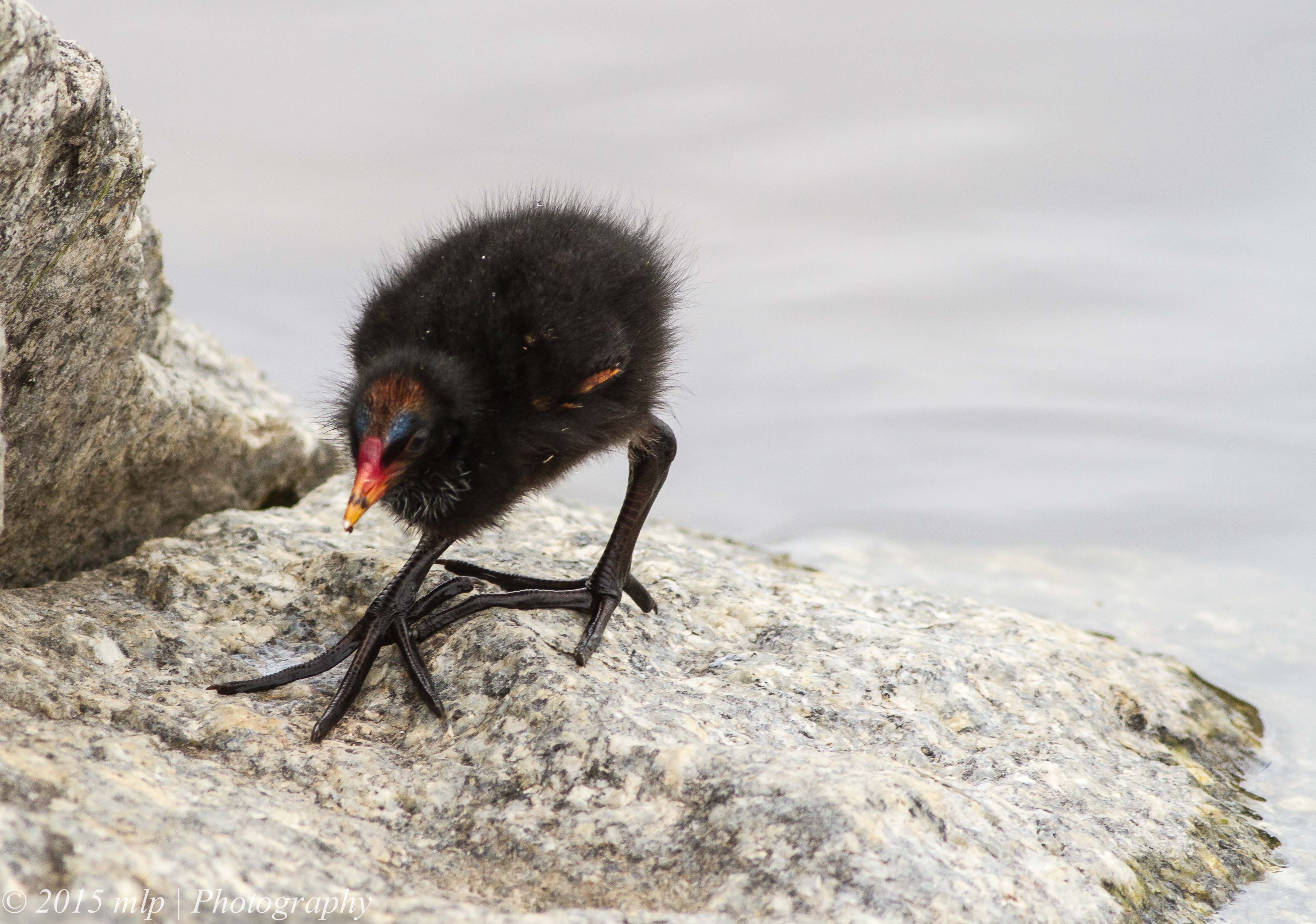
Their feet are very strange to look at, as they have three highly elongated digits that are reminiscent of something from Jurassic Park. These toes allow them to wade through vegetation and mud without slipping over. Image credit: Malt Padaderson
Hooded Plover (Thinornis rubricollis)
The Hooded Plover is a small, threatened shorebird that is affectionally known as a “Hoodie”, due to its conspicuous black head. It weighs as much as a banana and is often found bobbing in between seaweed piles in the splash zone to look for tiny invertebrates such as the shrimp-like amphipods.
Parks Victoria currently manages more than three quarters of the statewide population of hoodies, with one of the largest populations currently being found in Mornington Peninsula National Park, part of an Aboriginal cultural landscape in the traditional Country of the Bunurong people.
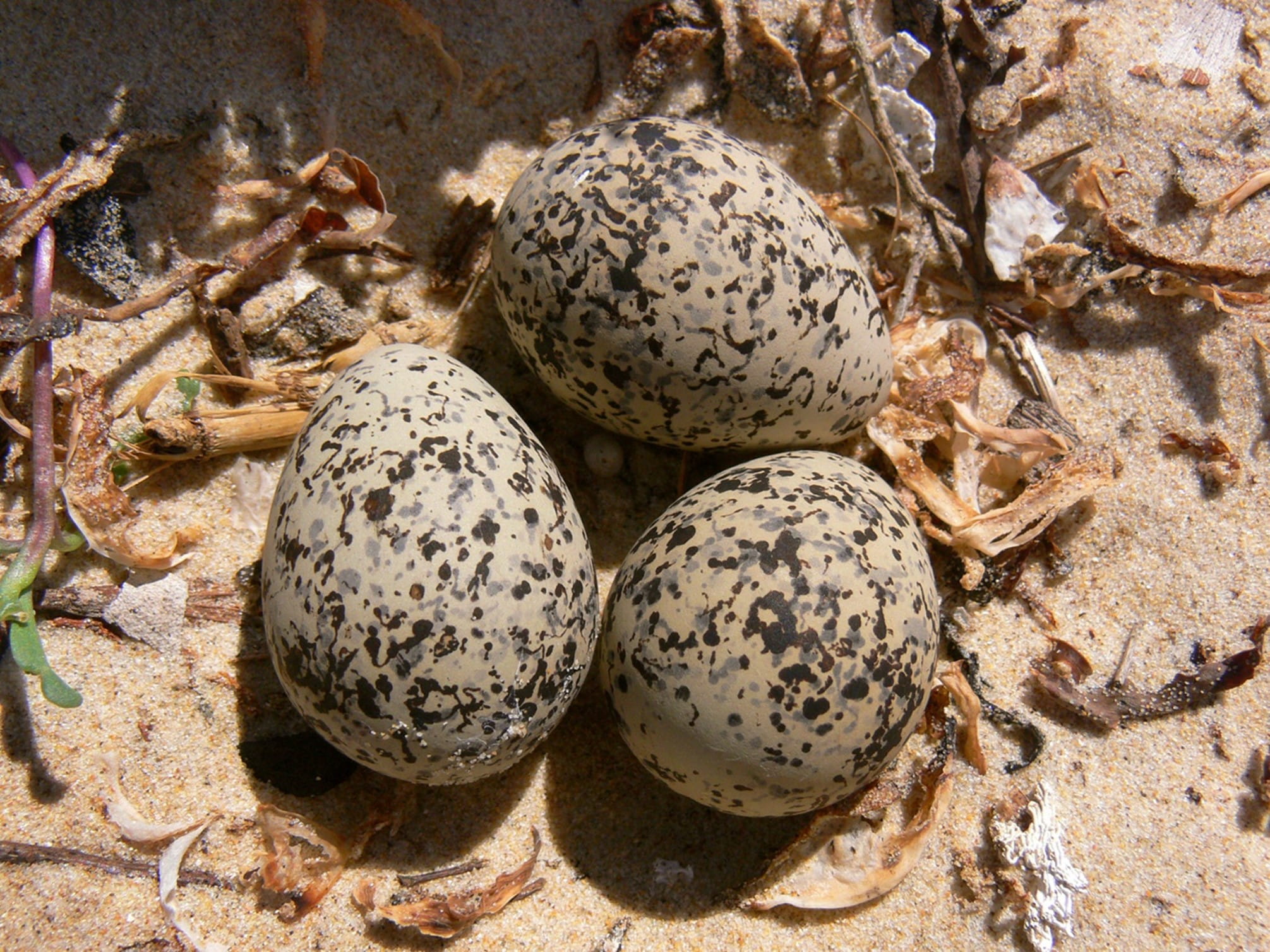
Hooded Plovers nest on high energy ocean beaches from August through to April, and their nest is nothing more than a scrape in the sand. Parents rely on the camouflage of their gorgeous, speckled eggs to keep them safe, and walk away from their nest when threats are nearby. Image credit: user Benjamin444 on Wikipedia.
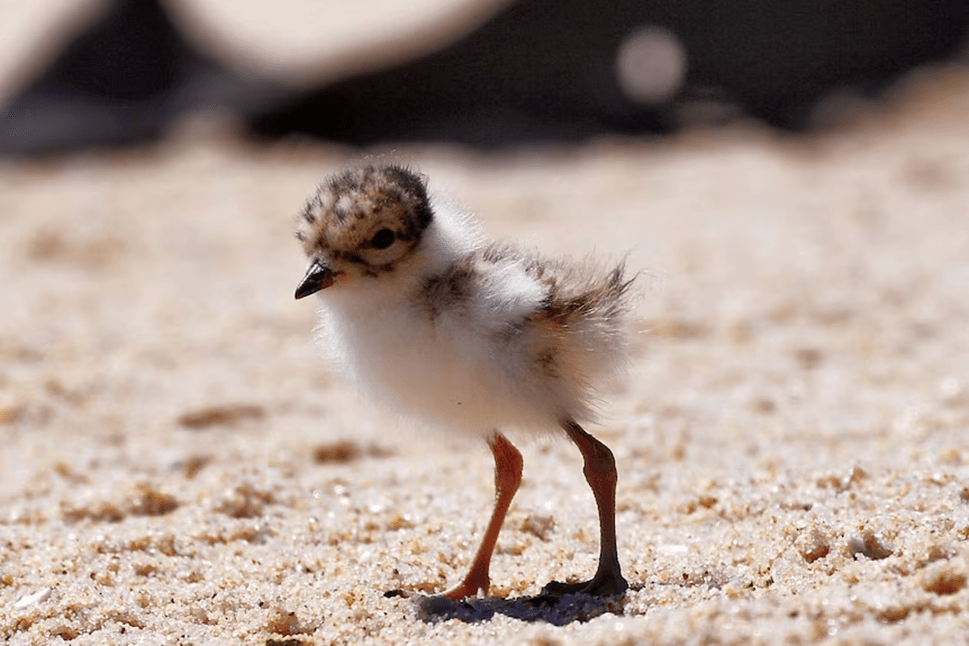
When a threat gets too close to a chick, parents act like an 'easier meal' and fake a broken wing, before flying out of reach. Chicks feed themselves from the day they hatch and fledge (fly) at five weeks old. Image credit: Birdlife Australia.
Dogs in national parks?
Victorians love pets and walking the dog is a fantastic way to stay active and enjoy the outdoors. But, observing local dog regulations is essential for wildlife, especially in spring when our native babies are venturing out into the world.
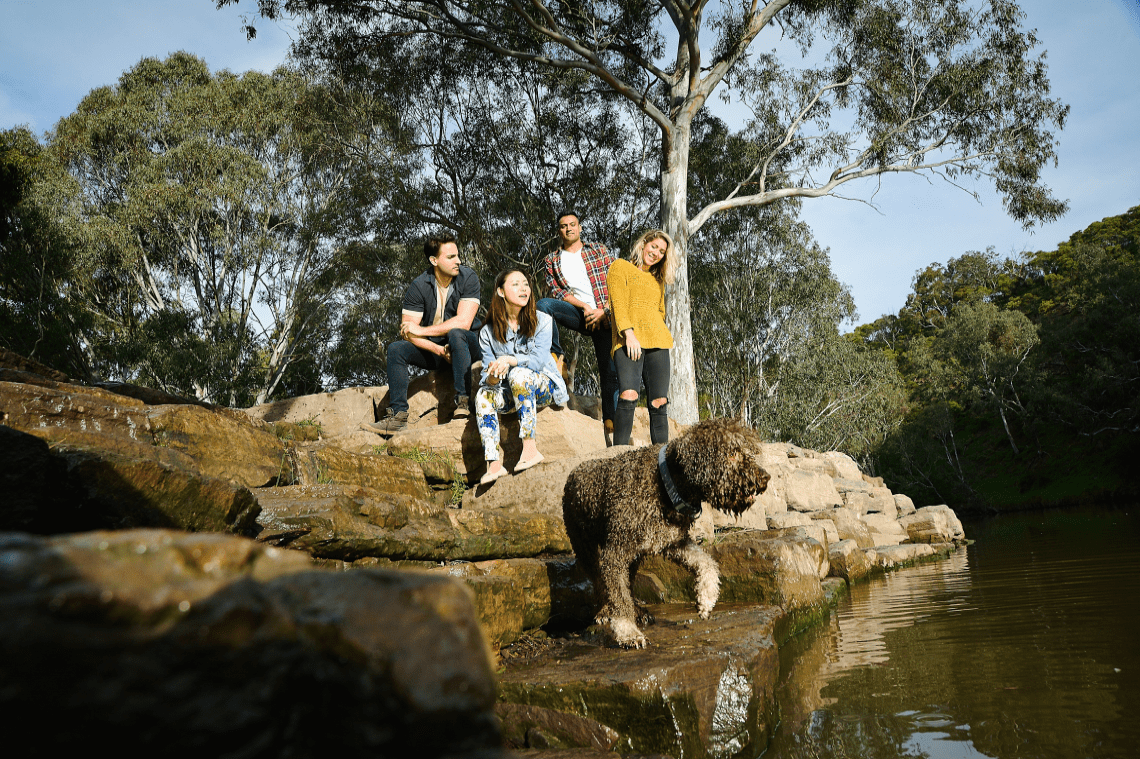
Dogs such as “Princess Fluffy” are permitted in many parks and reserves provided they are always under control and on leads, such as Dight Falls trail in Yarra Bend Park. This is a list of where you can take your dog, and where areas of off-leash play exist: Your A-Z guide to Victoria’s dog-friendly walking trails. Image credit: Parks Victoria
For the most part dogs are not permitted in national and state parks, and conservation reserves. There are exceptions to the rule, and you can find a list of where dogs are permitted in this article: Dog Friendly Parks. These areas are critical habitat for native animals.
Lisa Williams is a Parks Victoria ranger based in Mornington Peninsula National Park. She states, "We love dogs, just not in the national park. The protection of biodiversity is critical for the health of these fragile coastal ecosystems. Dogs don't know the difference between a tennis ball and a small bird, and we can't blame them - it's instinct! They also don't know their excitable behaviour can result in the trampling of a threatened shorebird nest.
Lisa has been a ranger with Parks Victoria for two years and has witnessed poor dog owner behaviour on a number of occasions, "Visitors bringing dogs into the park possibly don't consider the stress it causes wildlife. At the moment Hooded Plovers are breeding on Victorian ocean beaches, and their nests and chicks are extremely vulnerable to trampling and predation. It's every visitor's responsibility to give these birds, and all wildlife, the best chance at breeding success, and that includes leaving dogs at home when visiting national parks".
So, what’s the deal with “Princess Fluffy” in these areas? Let’s look at what makes a dog tick and how this can be perceived by native wildlife.
Our best friend: is wildlife the underdog?
Bandit enjoys leaving deceptively high scent marks. These exaggerated streams may fool other animals that the pooch is larger than what it is. Image credit: Ching Louis Liu
Humans and dogs share an incredibly close bond and are thought to have been one of the first animals ever domesticated by people. When this happened has been heavily debated, but there is clear evidence that this occurred at least 15,000 years ago.
Dogs are thought to be a sub-species of wolf (Canis lupus) and are found almost everywhere across the globe. There are over a billion domestic dogs worldwide. They are nowhere near as efficient as wolves, but dogs are avid chasers and are known to displace wildlife from their habits. Animals that are chased by dogs can exhibit severe behavioral changes. Some birds may entirely abandon areas that dogs are known to reside. One study published in Biology Letters (2007), investigating the urban fringe of Sydney, found that dog walking in woodland areas led to a 35 per cent reduction in bird diversity.
Dogs may even harbor parasites that can be passed onto native animals, which include hookworms and tapeworms that can be found in their feces. It is thought the sarcoptic mange that is devastating many populations of common wombats on mainland Australia (and may have caused local extinctions of the common wombat) most likely originated from pet dogs.
The conspicuous scent left behind by a dog is interpreted by native animals as something like their ancestral form (i.e., a wolf), and they act accordingly until the scent disappears. “I've also never met a wet dog that doesn't smell like a wet dog. Their smell is present in the environment for a long time after the dog has gone, and it is one of a predator, which can be alarming to wildlife and impact breeding behaviours,” says Lisa. Be sure to check dog regulations before you head out with your four-legged friend and remember to keep them on a lead at all times. Where dogs are allowed in parks, we expect owners to be responsible, pick up after their dogs and properly dispose of their waste.
There are penalties for bringing a dog to a protected area and if a dog is found to impact or attack wildlife, the owner could face court action or substantial fines of up to $4,807. While Parks Victoria staff will try to take an education-first approach, as we know most visitors want to do the right thing when in nature, if dogs are found in a protected area where they’re not allowed or in a dog-friendly park but off-leash, owners could face penalties of up to $2,885.
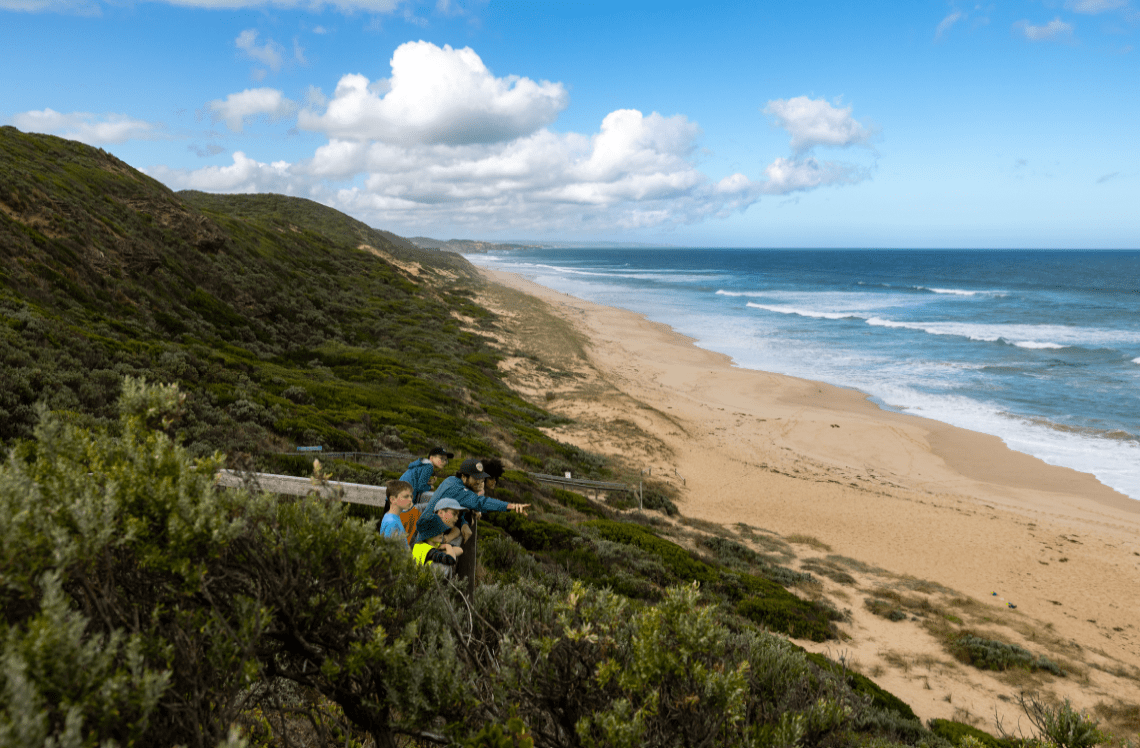
Ranger Rob surveys the dynamic landscape of the Mornington Peninsula National Park with a group of Junior Rangers. Image credit: Parks Victoria
Lisa reflected about the importance of having these protected areas for wildlife: “Native species find refuge in the natural and native environments of our protected areas. Along the scruffy coastal strip of Mornington Peninsula National Park, you’ll find hooded plovers, peregrine falcons, white-footed dunnarts, long-nosed bandicoots, swamp rats, swamp wallabies and a number of reptiles. The very least we can do to protect wildlife is to respect their habitat. This includes leaving pets at home when visiting national parks.”
Australia has the worst mammal extinction rates in the world and in fewer than 250 years, humans have driven more than 40 mammal species to extinction. More than 50 are currently considered critically endangered or endangered. With a burgeoning human population and human-induced climate change affecting our parks in drastic ways, it has never been more important to do the right thing.

